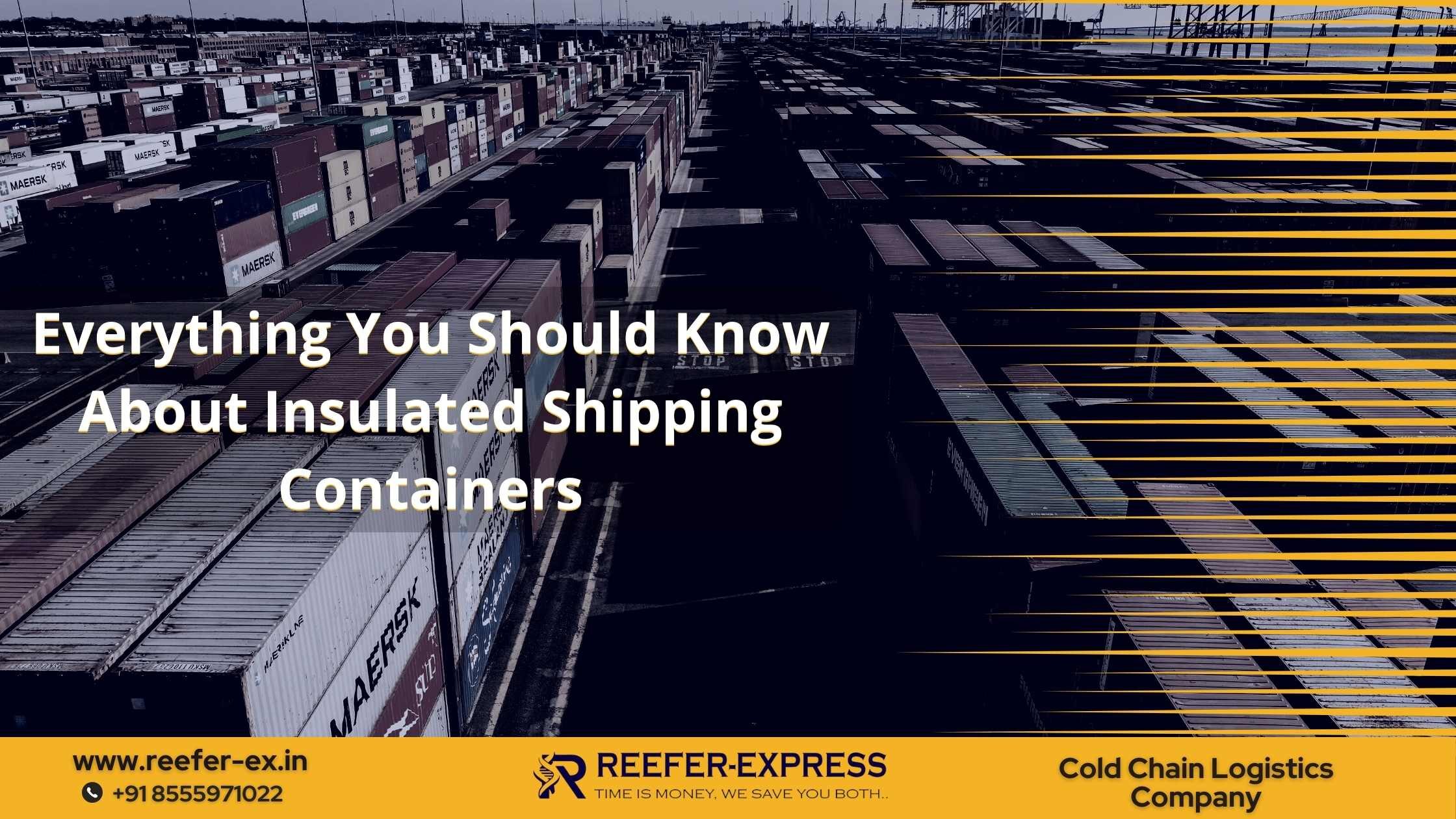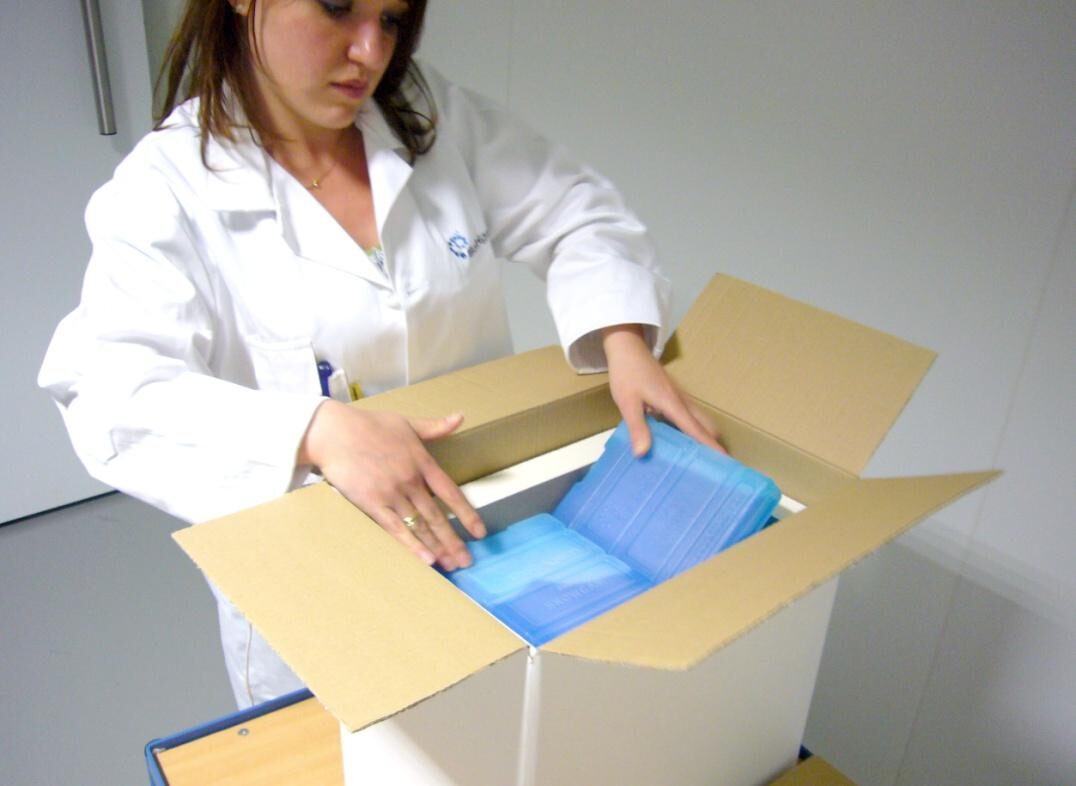The International Shipping Industry has grown exponentially over recent years due mainly because trade agreements have increased access across borders thus enabling greater economic exchange through efficient trading patterns worldwide.
The shipping industry is one that touches every aspect of our lives. Whether the cargo will be kept hot or cold, dry, and safe from harm – no matter what it may be; these insulated containers can handle all types!
The need to transport goods and materials quickly, securely, and at a reasonable cost has seen the demand for cold chain logistics solutions grow. In order to meet these demands, various cold chain options have been developed by the shipping container industry.
What is an insulated shipping container?
Insulated containers are designed to keep products cold or frozen during transit. They are typically used to transport pharmaceuticals and other temperature-sensitive items, but can also be used for other purposes such as storage. These insulated boxes are made from stainless steel or aluminum and have a layer of insulation between the inner and outer walls. The insulation helps to maintain the internal temperature of the container, preventing the product from spoiling or deteriorating.
There are a variety of insulated shipping containers on the market, each with its own set of features. Some insulated shipping containers have temperature-control features that allow you to set and maintain the internal temperature of the container. Others have tracking devices that allow you to monitor the location and condition of your product during transit.
What are the benefits of using insulated shipping containers?
There are many benefits of using insulated shipping containers, including:
- Reduced risk of product spoilage or deterioration: Keeping products at a consistent temperature can help to preserve their quality and prevent them from going bad too quickly. This is especially important for food items or other perishables. By using an insulated shipping container, you can help to keep your products fresh and free from damage. This is especially important for perishable goods, such as food and pharmaceuticals.
- Extended shelf life: Insulated shipping containers can help extend your products’ shelf life. This is because the cold temperatures prevent bacteria from growing and multiplying.
- Improved energy efficiency- Insulated shipping containers can help to reduce your overall energy costs. By keeping the interior of the container at a consistent temperature, you won’t need to use as much energy to heat or cool the space. This can help you save money on your energy bills and make your business more eco-friendly.
- Reduced transportation costs: Since the containers keep things cooler, they can often be shipped further without fear of spoilage. Thus you can transport more products in a single trip, saving you money on fuel and other transportation-related expenses.
- Enhanced product safety: Insulated shipping containers can aid you to keep your products like pharmaceutical or health care drugs safe and secure during transit. This is due to the fact that the containers prevent tampering and protect your products from damage.
What are the different types of insulated shipping containers?
There are a wide variety of cold chain insulated shipping containers that are available on the market today. Some of the most popular and commonly used include:
Regular Ice Totes
These are perhaps the most basic and commonly used types of cold chain containers. They are typically made from styrofoam or polyurethane and have a thick layer of insulation to keep contents cold. They come in a variety of sizes, but the most common is the 10-gallon tote.
Dry Ice Chests
This insulated container is made of a special blend of plastic that contains exceeds low-density polyethylene. This material ensures the best possible durability for transporting frozen products
Dry ice chests are similar to regular ice totes, but they have an added feature – a dry ice insert. This helps to keep contents even colder and can be used in conjunction with a regular ice pack.
Refrigerated Containers
A reefer has a motor and needs a power source like a generator on the vessel. The size of the reefer will determine how much power is required. They are equipped with a refrigeration unit that can maintain temperatures as low as -40 degrees Fahrenheit.
Refrigerated shipping trailers and trucks are another option for shipping perishable goods. These units have the same capabilities as a reefer container, but they are mobile and can be used to transport goods over land.
Temperature-Controlled Containers:
These containers are typically used for transporting goods that need to be kept at a specific temperature, such as pharmaceuticals or medical supplies. They are typically equipped with a thermostat and can maintain temperatures anywhere from -20 degrees Fahrenheit to 80 degrees Fahrenheit. It is useful for materials that require temperature-controlled packaging and distribution.
Thermal Containers
Thermally insulated vessels use either phase change material (PCM) or Deep Freezers. Deep freezers are the largest and most heavy-duty type of cold chain logistics container. They are typically used for long-term storage or for shipping items that require very low temperatures.
How Does Shipping Containers Insulated?
To ensure that products are delivered in perfect condition, there must be many ways for drivers to deliver these goods. The most common type of insulated shipping container is the refrigerated shipping container. This type of container uses a refrigeration system to maintain the cold temperature inside the container. The system works by using a compressor to cool the air inside the container and circulate it around the products.
Another type of insulated shipping container is the frozen shipping container. This type of container uses a freezing system to keep the products inside the container frozen. The system works by using a cold plate to cool the air inside the container and circulate it around the products.
Note: Insulated shipping containers basically contain nitrogen or carbon dioxide which are used to maintain cold temperatures. These gases are non-reactive, non-toxic, and odorless. They do not support combustion, so they are safe to use in the shipping process.
Why Choose Reefer Express For Cold chain Services
At Reefer Express, we offer a wide range of cold chain logistics solutions to help you transport your products safely and securely. We have a team of experienced professionals who can advise you on the best way to transport your products. We also have a fleet of refrigerated shipping containers that are designed to keep your products cold during transit.
If you are looking for cold supply chain services, we have covered you all. Contact us today to learn more about our cold chain logistics solutions.
FAQ’s
Q: What are various types of Insulated Shipping containers
- Fiberglass: Fiberglass is a type of insulation that is made from glass fibers. It is often used in cold storage applications because it is non-combustible and has a high R-value.
- Styrofoam: Styrofoam is a type of insulation that is made from expanded polystyrene. It is often used in cold storage applications because it is lightweight and has a high R-value.
Q: What are the dimensions of an insulated shipping container?
The dimensions of an insulated shipping container vary depending on the type of container. For example, a refrigerated shipping container typically has an inside length of 20 feet (6.1 meters), an inside width of 8 feet (2.4 meters), and an inside height of 8 feet (2.4 meters).
Q: How long does an insulated shipping container last?
The lifespan of an insulated shipping container depends on the type of container and the application. For example, a refrigerated shipping container typically has a lifespan of 15 to 20 years, while a frozen shipping container typically has a lifespan of 10 to 15 years.
Q: How much does an insulated shipping container cost?
The cost of an insulated shipping container varies depending on the type of container and the application. For example, a refrigerated shipping container typically costs between $2,000 and $4,000.
Disclaimer: This content is provided for informational purposes only. It is not intended to be used as legal or professional advice. You should consult with a licensed attorney or professional if you have any questions about your specific situation.






